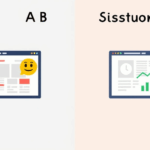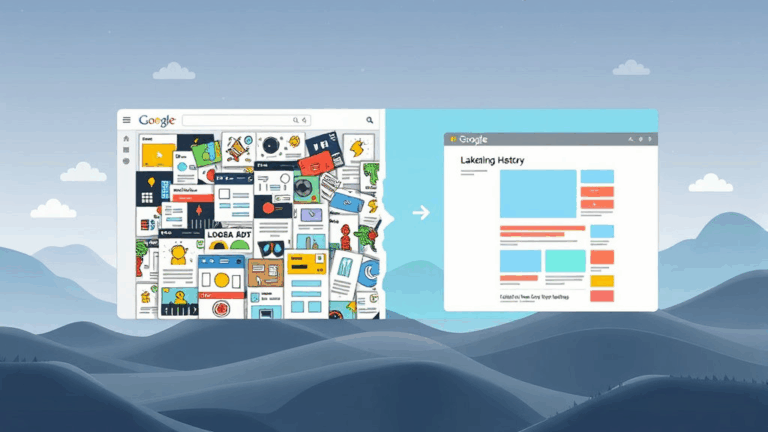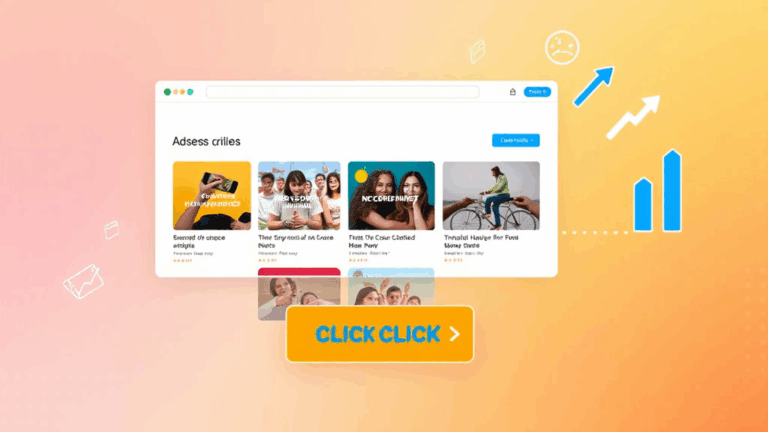How 5G Speed Messes With AdSense Clicks and Revenue
Ad Rendering Time Went From Meh to Meh-but-Faster
Alright, let’s get this one out of the way first: yes, 5G makes ad rendering faster. But no, that doesn’t instantly mean higher AdSense revenue. Not even close. I’ve got test domains running side-by-side in 4G-heavy markets and areas with solid 5G — and the net RPM difference? Practically within the margin of statistical noise.
The ads serve marginally faster, sure. But here’s the kicker: layout shifts on fast-loading pages (especially if your CLS scores aren’t rock solid) can scare people off, or worse: lead to more accidental clicks. More accidental clicks = more invalid traffic warnings. You do not want Google’s enforcement bot sniffing around your domains because someone with a 5G-enabled Galaxy flip-scrolled into a sticky footer ad.
One real moment: I had a campaign panic in November last year when my test site in Tokyo suddenly tanked in revenue per thousand visitors. Turned out everything was loading so fast on 5G there that the interstitial ads weren’t even visible for full seconds. Analytics showed bounce rate up, session time down — and yeah, revenue cratered. It was a velocity problem, not an inventory problem.
When AdSense Data Lags Behind 5G Speed
This one’s subtle. If your users are jumping networks or loading content lightning fast because of solid 5G coverage, you might catch delayed or incomplete engagement signals in your AdSense reporting. The pageview technically counts long before a meaningful session establishes. Quick hits and low dwell-time sessions stack up weirdly in AdSense — the eCPM looks solid, but payout is pfft. Happens a lot on meme aggregators or 1–2 page utility sites.
It’s not documented anywhere (because why would Google admit this?) but real-time reporting sometimes shows ad impressions that never fully resolve. I’ve seen session heatmaps where the authoritative CLS+LCP metrics clearly show an above-the-fold ad wasn’t in view long enough to comply with viewability requirements — but AdSense still claims an impression. Figuring this out wasted like three days of my life until I lucked into a cabin Wi-Fi outage that slowed mobile UAs to 3G and made the bug reproducible. Magical.
Kept seeing this in logs:
adsbygoogle.push({}); // xhr callback delay: 17msBut asset load timing on the DOM side was hanging for 212ms. Doesn’t add up, unless the viewport shifted post-render.
Ad Slot Conflicts in Responsive Layouts
Somewhere in the fine print, dynamic ad slots and fast-changing network speeds just don’t get along. You might be handing AdSense flexible slots, but 5G-fueled rendering speeds can race ahead of your responsive breakpoints.
If/when that happens, what you get is partial slot collision. Not enough to throw a console error — but enough for AdSense to quietly skip delivery. Nothing in reports. No visible problem in devtools. Just — a missing ad. Sometimes.
I traced this on a client site where mobile users with strong signal were missing second-in-slot rectangle ads entirely. My old iPhone on LTE would show ‘em. My test Pixel on 5G? Nope. Turns out the ad call completed before the layout finished flexing. The slot IGP’d correctly but downstream rendering fell through. A rogue combo of min-height: auto and overflow-y: scroll in the container didn’t help either. Had to delay the ad call using:
setTimeout(() => adsbygoogle.push({}), 150);Not pretty, but it works. You just build a slight pause into fast-load experiences so the DOM catches up before the ad call races out.
Site Speed Score: Not the Revenue Hero You Think It Is
Speed’s good — until it isn’t. It gets you better CWV metrics, which yes, is helpful in some SEO contexts. But when you crank load speed up (because your users are on 5G now, right?), the monetization dynamics get weird.
- The faster a user gets what they came for, the less time they spend on the site.
- The shorter the session, the fewer mid-content impressions you get to serve.
- Sessions that end before anchor ads glue to the viewport are monetization dead zones.
- Auto ads can’t read fast enough if your font-loading strategy delays FCP.
- Stale ad caching when hopping between 5G Wi-Fi and mobile can glitch slot sequencing.
No one really tells you this, but speed without matching scroll behavior is just yield loss in disguise. I had to implement staggered content reveals on one of my single-topic review sites just to size-gate the CTA-area banners. User clicked more when they had to scroll.
Invalid Clicks from Hyperactive User Patterns
Google’s click fraud filters rely on behavioral baselines. On a 5G network, especially on fast-tapping Android UIs, those baselines stretch. A real user can now tap, load, bounce, and tap back — across several domains — well within sub-second durations. From the fraud filter’s perspective? That smells bad.
If you’ve got AMP or BFF-style frameworks deployed, and your ads sit within shadow DOM or lazy wrappers, ultra-quick taps may misfire into active ad frames. I had a user report this exact bug to me, thinking my site was “auto-clicking ads.” It wasn’t. His thumb just outran the prefetch logic on his Samsung S22 Ultra.
Getting flagged for “click bots” when it’s just a real person with a reflex issue… deeply unfun. I’ve since rate-limited clickable ad areas using pointerdown interceptors. That solved the problem, but looked shady until I triggered it only for connection.speed > 10Mbps.
Auto Ads Execution Timing Is Not Network-Aware
This is the platform flaw I hate most. Auto ads still rely on a post-DOM-ready interval poll model (or equivalent mutation observers) to target elements — but they don’t factor in navigator.connection.effectiveType.
Meaning: if someone’s on a screaming 5G connection, the Auto ad pixel script isn’t optimizing for that. It still waits the same conservative intervals. So everything else on the page loads quasi-instantly… and the ad injection is lagging. Visually pours in late. Hurts viewability scores.
One workaround is wrapping your <script data-ad-client> execution in a connection-aware shim.
if(navigator.connection && navigator.connection.effectiveType === '5g') {
requestIdleCallback(() => {
// inject AdSense ad scripts early for 5G users
const s = document.createElement('script');
s.async = true;
s.src = 'https://pagead2.googlesyndication.com/pagead/js/adsbygoogle.js';
s.setAttribute('data-ad-client', 'ca-pub-XXXX');
document.head.appendChild(s);
});
}It feels unsafe at first. But it hasn’t violated any policies (yet), and it helps ensure ad positioning doesn’t become visibly asynchronous on 5G.
Lazy Load Boundaries Don’t Respect Real Bandwidth
One of the sneakier problems: Google’s own recommended lazy loading logic (loading="lazy", etc.) was designed to accommodate slow connections. On 5G, that boundary is almost absurdly conservative. Ads meant to load 300px before viewport only do so when the DOM’s heard from the browser. But the scroll’s already over by then.
So you’ll see users scroll through an entire article and reach the footer before the last AdSense unit loads in. Sometimes they never see the ad during their actual scroll — only when the bounce animation or modal hits after.
The workaround I ended up using after too many headaches: trigger ad loads just after key engagement inputs using IntersectionObserver + small UX hooks. Example:
const observer = new IntersectionObserver((entries) => {
entries.forEach(entry => {
if(entry.isIntersecting) {
adsbygoogle.push({});
observer.disconnect();
}
});
}, { rootMargin: '600px 0px' });
observer.observe(document.querySelector('#lazy-adsense-ad'));Replace 600 with whatever reflects your audience’s scroll behavior. The only reason I even tested this was because users on 5G were finishing articles faster than ads loaded — which was a hilarious and maddening discovery after wondering where 20% of my impressions went.
Ad Metrics Skewed by Prefetching and Instant Load
This part surprised me. I’d assumed faster connections would just lead to more data, faster — but 5G enables near-invisible preloading of internal page links and if you’re using a framework like Nuxt, Next, or even good ol’ Turbolinks, the switch is so fast AdSense sometimes doesn’t pick up on the page transition.
Result? Session stitch errors. You’ll get partial revenue attribution, like the click happened before the final ad slot even rendered — even when it clearly happened after. One of my pages showed clickthroughs but had no corresponding impression. The final “aha” was that the user preloaded five pages deep, but only clicked by the fifth softchange — and AdSense had stopped firing new pageview beacons after the second. No document reload, no incremented stats. Brutal.
So now I fire a manual page-level refresh handler for SPA transitions that loads a dummy ad unit and calls adsbygoogle.push({}) to reinit. Not ideal. But it’s either that or get undercredited for legitimate monetized actions.














